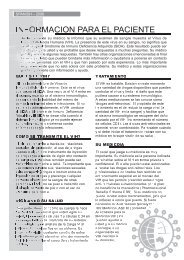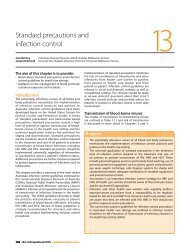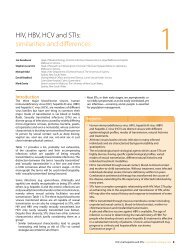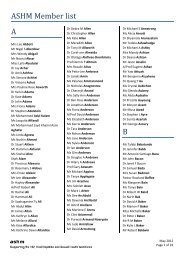B Positive – all you wanted to know about - ASHM
B Positive – all you wanted to know about - ASHM
B Positive – all you wanted to know about - ASHM
You also want an ePaper? Increase the reach of your titles
YUMPU automatically turns print PDFs into web optimized ePapers that Google loves.
3 Hepatitis B virus testing and interpreting test results<br />
is usu<strong>all</strong>y detectable between week 4 and week<br />
10 in acute infection. chronic HbV infection is<br />
defined by the persistence of Hbsag for more<br />
than six months.<br />
Antibody <strong>to</strong> surface antigen (anti-HBs)<br />
this is a protective antibody that develops with<br />
the resolution of acute infection or following<br />
the successful vaccination against HbV. Very<br />
occasion<strong>all</strong>y, anti-Hbs and Hbsag can be<br />
found <strong>to</strong>gether, which has no <strong>know</strong>n clinical<br />
significance.<br />
Antibody <strong>to</strong> core antigen<br />
(anti-HBc)<br />
the HbV core antigen is not found as a discrete<br />
protein in the serum. it is produced in the<br />
hepa<strong>to</strong>cyte cy<strong>to</strong>sol during HbV replication,<br />
surrounding the viral genome and the<br />
associated polymerase. it is then packaged<br />
within an envelope before secretion from the<br />
hepa<strong>to</strong>cyte. the antibody <strong>to</strong> HbV core (anti-<br />
Hbc) is an antibody <strong>to</strong> a peptide of this core<br />
protein, which has been processed within an<br />
antigen presenting cell. in acute infection,<br />
anti-Hbc immunoglobulin M (igM) is found in<br />
high concentrations which gradu<strong>all</strong>y decline,<br />
complementing the corresponding increase in<br />
anti-Hbc igG over a three <strong>to</strong> six month period.<br />
elevation of anti-Hbc igM usu<strong>all</strong>y signifies<br />
acute infection, but low elevations may also<br />
occur during the reactivation of chronic HbV.<br />
anti-Hbc igG remains positive for life following<br />
exposure <strong>to</strong> HbV, however, unlike anti-Hbs,<br />
anti-Hbc is not a protective antibody. Most<br />
serological assays do not directly measure anti-<br />
Hbc igG, but test for <strong>to</strong>tal anti-Hbc antibody.<br />
Hepatitis B e antigen (HBeAg)<br />
Hbeag is an accessory protein from the<br />
precore region of the HbV genome, which is<br />
not necessary for viral infection or replication. 1<br />
it is, however, produced during active viral<br />
replication and may act as an immunogen or a<br />
<strong>to</strong>lerogen, leading <strong>to</strong> persistent infection.<br />
Antibody <strong>to</strong> e antigen (anti-HBe)<br />
While anti-Hbe is not a protective antibody, its<br />
appearance usu<strong>all</strong>y coincides with a significant<br />
immune change associated with lower HbV<br />
3 b <strong>Positive</strong> <strong>–</strong> <strong>all</strong> <strong>you</strong> <strong>wanted</strong> <strong>to</strong> <strong>know</strong> <strong>about</strong> hepatitis b: a guide for primary care providers<br />
dna replication (






